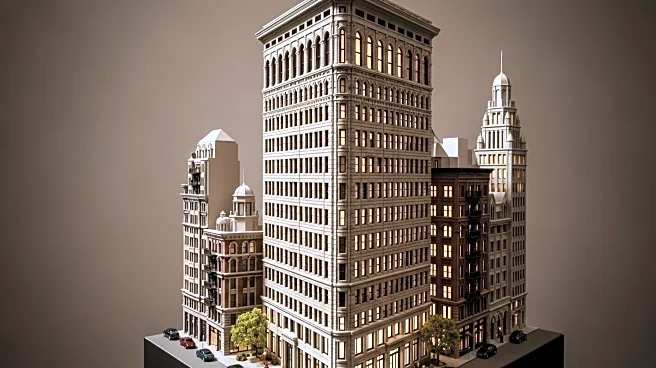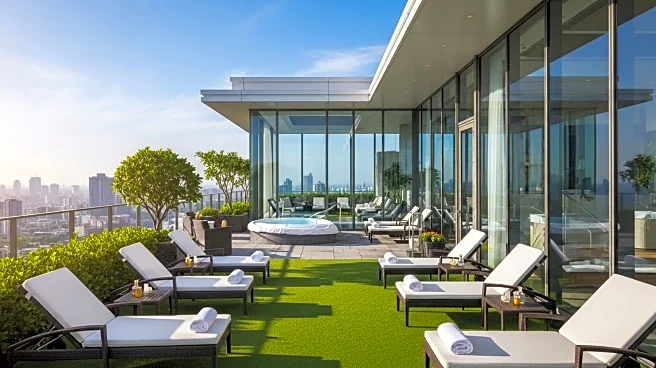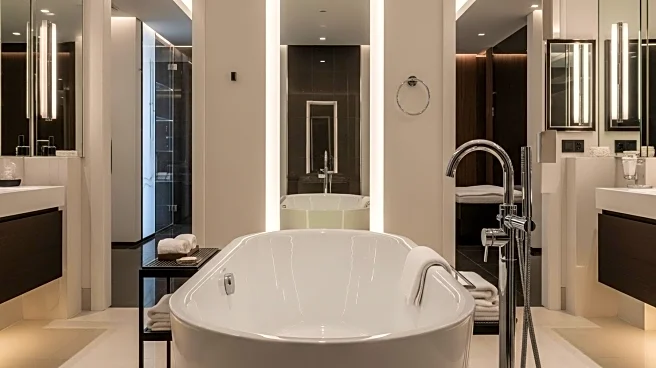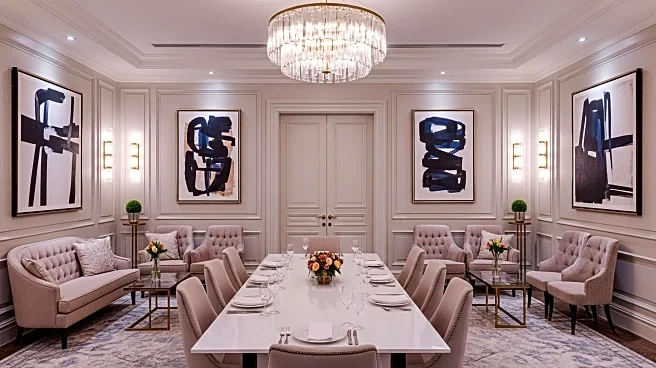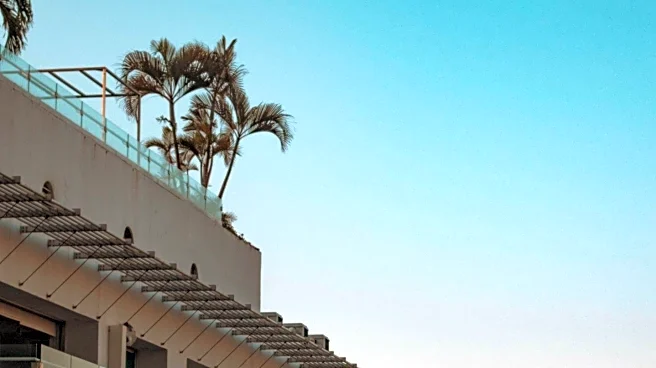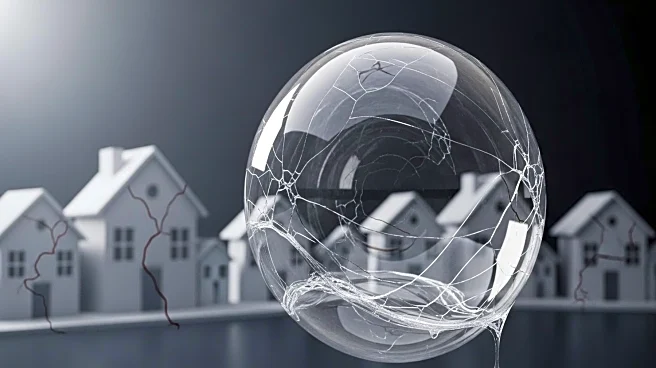What's Happening?
The iconic Flatiron Building in New York City is undergoing a significant transformation from office space to luxury condominiums. The development, led by the Brodsky Organization and the Sorgente Group, is set to include 38 private residences. Prices for these units will start at just under $11 million, with the most expensive units on the 20th and 21st floors priced at $48 million and $50 million, respectively. These high-end residences will feature expansive living spaces, with the priciest units offering over 7,400 square feet. A standout feature of the development is a 4,600-square-foot penthouse with a 6,600-square-foot outdoor terrace, the largest in the building. The project is expected to generate a sellout of approximately $375 million for the first 18 residences, with additional revenue from storage lockers and wine cellars pushing the total above $380 million.
Why It's Important?
The conversion of the Flatiron Building into luxury residences marks a significant shift in the use of one of New York City's most recognizable landmarks. This development reflects broader trends in urban real estate, where historic buildings are being repurposed to meet the demand for high-end living spaces. The project is likely to attract affluent buyers, contributing to the ongoing gentrification of the area. Additionally, the restoration of the building's Beaux-Arts limestone and terra-cotta façade, in coordination with the Landmarks Preservation Commission, underscores the importance of preserving architectural heritage while adapting to modern needs. The high price tags associated with these residences highlight the premium placed on living in such a historic and iconic location.
What's Next?
As the project progresses, the developers have enlisted Corcoran Sunshine Marketing Group to manage sales, with brokers already securing deals. The restoration and conversion work is ongoing, with the building currently surrounded by scaffolding. The completion of the project will see the Flatiron Building occupied as residences for the first time in its 120-year history. The success of this development could influence future projects involving historic buildings in urban centers, potentially setting a precedent for similar conversions. Stakeholders, including potential buyers and preservationists, will be closely watching the project's impact on the local real estate market and the preservation of historic architecture.
Beyond the Headlines
The transformation of the Flatiron Building raises questions about the balance between preserving historical architecture and meeting modern housing demands. The project involves a meticulous restoration of the building's façade, which includes installing over 1,000 new windows and replicating thousands of ornamental pieces. This effort highlights the challenges and costs associated with maintaining architectural integrity while adapting buildings for contemporary use. The development also reflects a broader trend of luxury real estate projects in major cities, which can contribute to rising property values and potential displacement of existing communities.

